Fire Emblem: Three Houses Review: Grand Strategy
- Offers an excellent and addicting battle system
- Accessible to newcomers while offering something for veterans
- A surprisingly engaging story
- The main character leaves a lot to be desired in terms of development
- Many other characters are one-dimensional
The Nintendo Switch isn't hurting for quality first-party games, and arguably hasn't been since the day the console was released. In an effort to make sure the Switch doesn't turn into another Wii U, Nintendo has tapped nearly all of its franchises for Switch titles, and the latest series to arrive on the Switch is Fire Emblem. It's been a long, long time since there was a proper Fire Emblem game on home consoles, because in recent years, the series has been exclusive to Nintendo's handhelds. Given the Switch's hybrid design, putting a Fire Emblem game on it was a no-brainer.
The Fire Emblem series is a very dear one to a lot of tactical RPG fans, so does Fire Emblem: Three Houses meet the high expectations they undoubtedly have? For me at least, the game not only meets them, but exceeds them in a lot of ways, and though it isn't the perfect game, it's one well worth checking out for anyone who's a fan of strategy games.
Nearly right away, you're thrown into an introductory battle alongside three of the game's principal characters: Dimitri, Claude, and Edelgard. Once you help them out, it's off the Garreg Mach Monastery, which sits in the center of a continent called Fodlan. Garreg Mach is also home to the Officers Academy, where Dimitri, Claude, and Edelgard serve as leaders of three different houses of students.
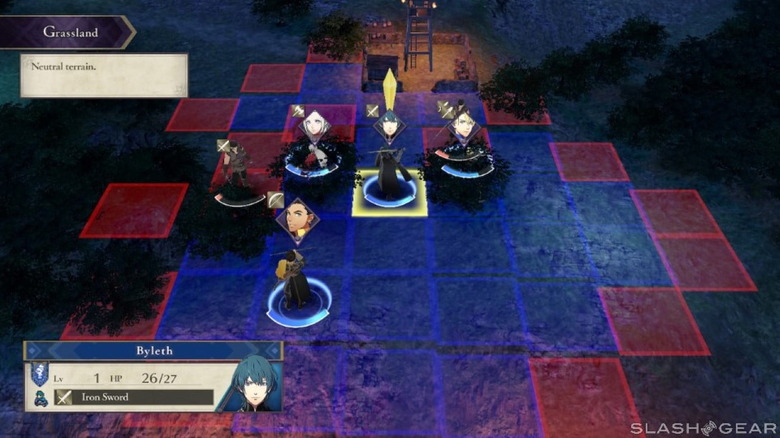
Those characters are also royalty of some variety, each hailing from one of Fodlan's three nations: the Adrestian Empire, the Holy Kingdom of Faerghus, and the Leicester Alliance. The nations are rivals with one another, but with the Church of Seiros acting as something of a mediator from its central spot at Garreg Mach, we begin the game in times of relative peace. Obviously, since this is a game about war, that doesn't last for long, but we'll avoid talking about the finer parts of the story lest some plot points are spoiled.
After that initial battle, we quickly encounter the first of Three Houses' surprises: you're asked to become a professor for the school year ahead and to pick one of three houses to teach, with each one representing one of Fodlan's three nations. That means you don't start the game as some valiant state leader or some battle-hardened warrior who has climbed through the ranks of the military. Instead, you're a mercenary-turned-professor and your army is comprised of students.
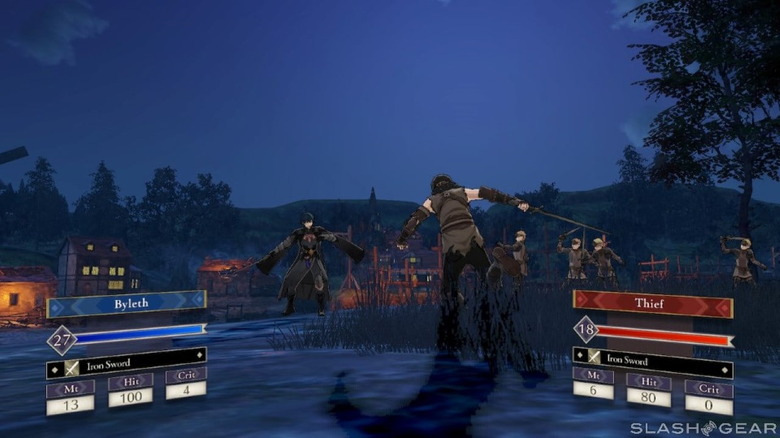
This certainly feels like a strange decision at first, but once you dig into the game a bit, it's actually a pretty creative way of handling character progression. At the beginning of every month, you'll get a schedule for the weeks ahead along with a stipend to spend on things like weapons and items. Generally, you've got some kind of mission battle to complete at the end of the month, with two or three weeks of instruction before it. It's during these instruction periods that you can enhance the skills of your units, though they also gain skill experience when participating in battles.
This approach to unit development means you have a lot of flexibility when it comes to what your characters specialize in. Each character has skills that they are proficient and disinterested in, which acts as something of a guideline if you don't want to put much thought into building out their capabilities, but you don't have to follow these if you don't want to. Instead, you can ignore all of that and simply build characters to fill a hole in your team composition.
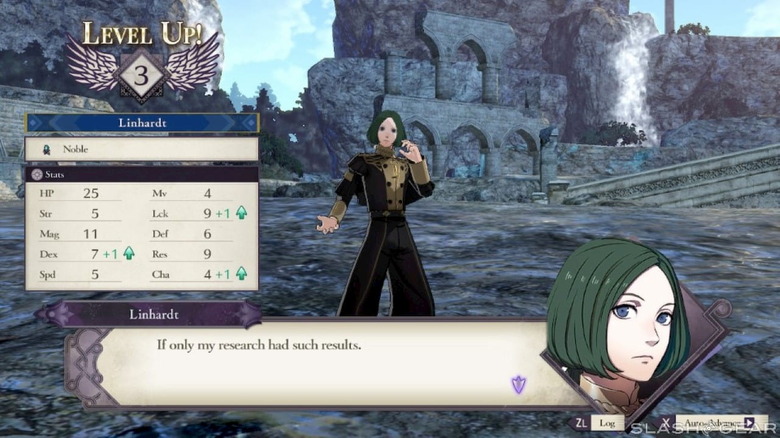
It's been a long while since I've played a Fire Emblem game so I can't really tell you how this is different from the systems that came before it, but regardless, I appreciate that I'm more or less free to do what I want when it comes to building out units. You can even use this skill system to shift the focus of characters mid-way through the game – they may not be as powerful as they would be if you would have focused on a couple of skills from the very start, but training up different skills ultimately means that you'll have more options when it comes to classing them.
The days that you aren't teaching or completing a story mission are free days where you have one of four choices: You can explore the monastery, attend a lecture, battle, or rest. When you explore the monastery, you'll have the opportunity to interact with students – yours and students from other houses – and faculty members, the latter of whom can train you to improve your own skills. You can also complete quests, manage everyone's inventories, visit the shops, and even do certain field actions like fishing and gardening to obtain items you can use in cooking stat-boosting dishes or as gifts to other players.
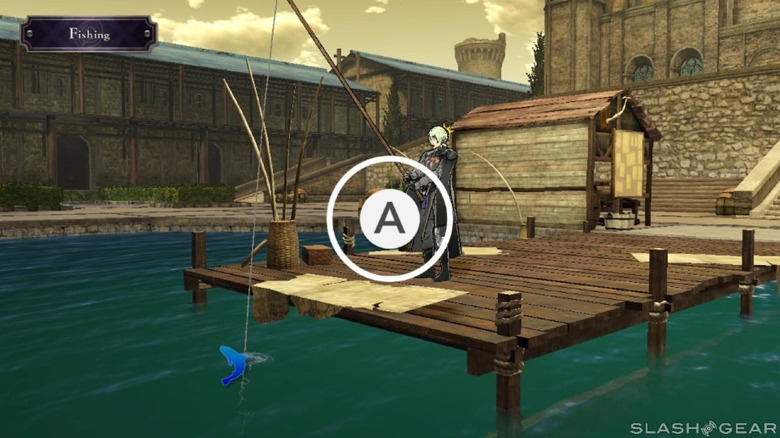
Exploring the monastery is a very significant portion of the game. Not only is this when you'll complete quests outside of battle and collect items for your army, but this gives you an opportunity to build support levels between your units. As units improve their support levels, they get various buffs when fighting alongside each other in battle. You can even raise support to the point where you can marry someone, which is a common mechanic in Fire Emblem titles.
There's a lot to do when you're exploring the monastery, and you'll spend a large amount of time doing it. I was actually surprised by how much time exploring the monastery can take, especially if you want to use all of your action points each time and talk to everyone you encounter. You can even use this time to recruit students from other houses or ask them to join your team in battle temporarily, but if you want them to switch houses, you'll need to fulfill certain stat requirements before they'll accept.
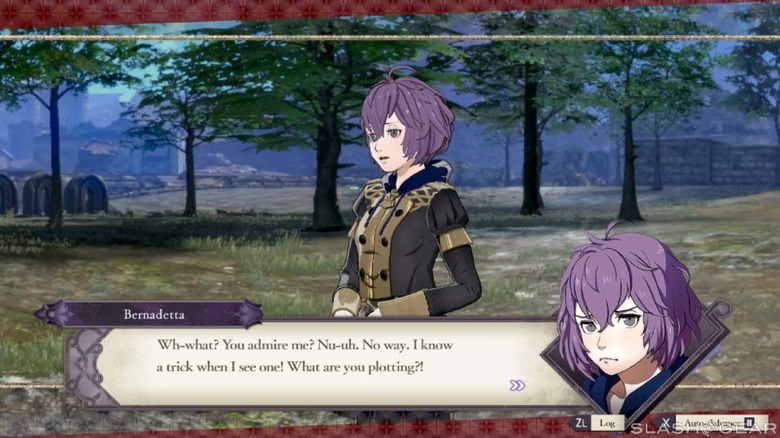
Of course, the core mechanic of this game is fighting, and you'll be doing that a lot too. Not only does each month culminate in a battle of some sort, but you've got plenty of chances throughout the month to do auxiliary battles that may not be essential to the story but still give you some background nonetheless.
It's clear that a lot of care has gone into crafting Three Houses' battle system, because for as much time as one spends on the battlefield while playing this game, it never gets old. At the beginning of the battle you're presented with a wheel of options – among other things, you can view the map and rearrange your units; look at everyone's inventories and equip your units from the convoy (which is where your unused items are stored); visit the various shop to purchase new equipment or repair existing items; or even view support levels between your various units.
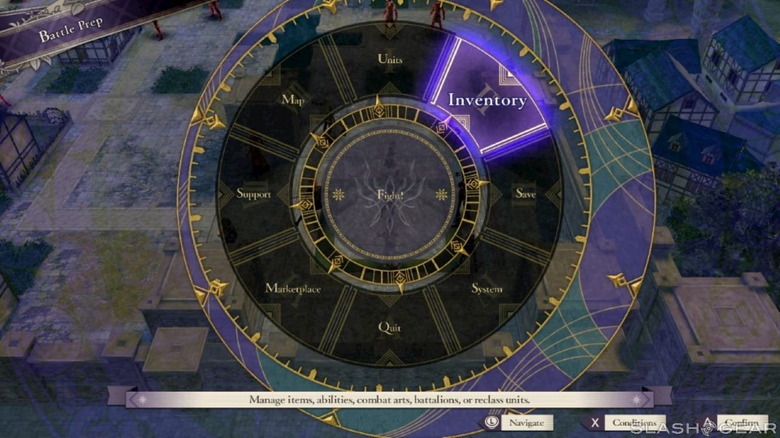
For some fights, preparation can be the difference between an easy victory and a hard-fought one. Every weapon equipped by your units has a durability rating that decreases every time it's used, so you need to regularly make sure that your weapons are in good repair before heading into battle. It's also important that you check the composition of the enemy army so you can bring the right units to fight them. For instance, you may not want to bring a wyvern rider – a flying unit that's weak to archers – into a battle where there are a bunch of archers on the opposing side.
There's a lot to consider when going into battle, and on classic mode, that planning matters, because once a unit falls in battle, they're dead for good. Playing on normal mode, there weren't very many instances where one of my characters died, but it was still possible if I got careless or too aggressive. On normal, in fact, it feels like the game can almost get too easy if you make sure to do auxiliary battles regularly, so on subsequent playthroughs, I think I'll try hard mode to up the challenge a bit.
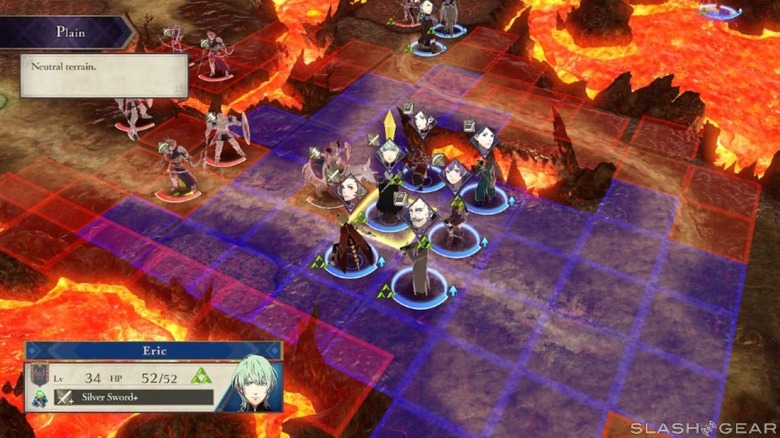
One major change to the battle system is the removal of the weapon triangle that was present in previous Fire Emblem games. The melee weapons you can use in Fire Emblem generally boil down to three different types: spears, swords, and axes (though in Three Houses, there are some exceptions to that, such as brawlers who can use gauntlets). In past games, spears were strong against swords, swords were strong against axes, and axes were strong against spears.
In Three Houses, that weapon triangle is gone. Now, units gain advantages over certain weapon types by improving their own weapon skills. So, while there are a lot of similarities between the weapon triangle in previous games and the ability system in Three Houses, you've got more flexibility here because you aren't bound to a static rock-paper-scissors strength chart.
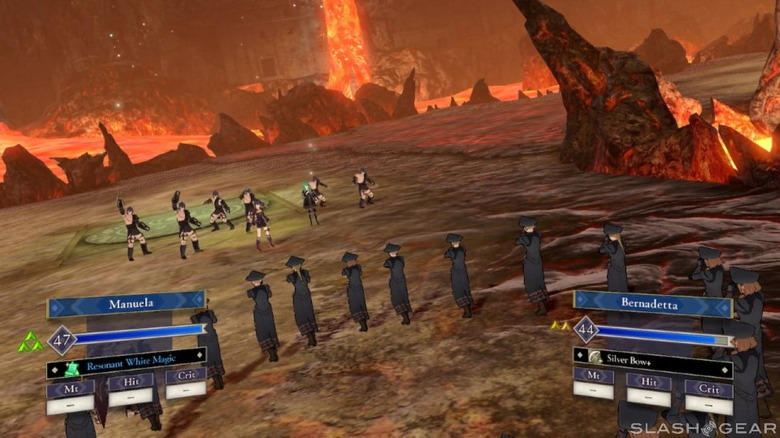
Then we have the addition of battalions, which bring an entirely new mechanics to Fire Emblem battles. Battalions can be purchased from the market or earned by completing certain objectives and quests in-game. They can be assigned to any unit in your army, though which battalions your units can equip depends on their leadership skill. Battalions not only buff the unit they're equipped to with additional stats, but they also unlock a new type of attack called a gambit, which can do any variety of things.
It's exhausting just talking about battle alone in Three Houses because there's so much to it, but that depth is what makes it so fun. The battle system is what keeps me coming back to this game, and it's what will make me pick it up again for subsequent playthroughs. Fire Emblem: Three Houses, like many of the games that came before it, is a masterclass in how to make a tactical RPG battle system.
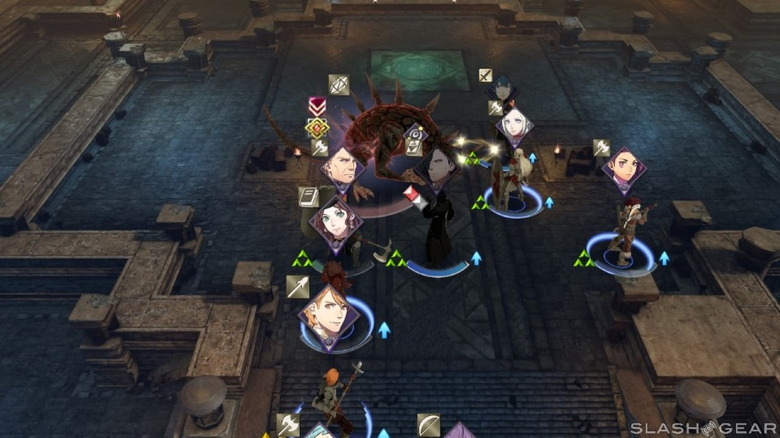
Battles are absolutely the high point of this game, but that doesn't mean the rest of it is bad. I was actually surprised by how much I was drawn into the story, confusing and vague though it may be at first. Again, I won't get into story details here, but there are definitely some surprises along the way. The story is also another thing that lends to replayability, and I'm looking forward to playing through the game again so I can pick a different house and see how the story changes.
For as much as I enjoy the story and love the battle system, I do have a few complaints. For starters, I don't think the main character is very compelling – often it doesn't feel like you're the one driving the action, but rather the one who's witnessing the action and simply responding to it. The main character doesn't have much of a personality, and while I understand that they're supposed to be a mostly-silent stand-in for the player, it quickly becomes clear that you're supposed to be very important to the story. It would be nice if the main character had a personality to match that importance.
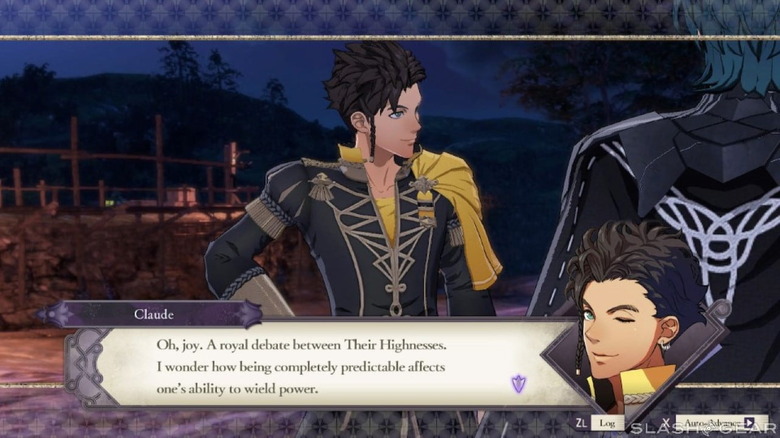
Many of the characters in this game start off rather one-dimensional too. Between the three houses and the monastery faculty, there are a ton of characters in this game, and many of them have one thing that's core to their identity. While this gives them a clear identity among the crowd, it also means that you get a rather flat picture of who these characters actually are. Luckily, they begin to get more fleshed out in the latter half of the game, but Three Houses is definitely a story-driven game rather than a character-driven one in my eyes.
Fire Emblem: Three Houses Verdict
At the end of it all, my complaints about Fire Emblem: Three Houses are minor in the grand scheme of things. This is still a very, very good game, and in my opinion, it's one of the must-have titles for the Switch along The Legend of Zelda: Breath of the Wild, Super Mario Odyssey. and Super Smash Bros. Ultimate. It's that good.
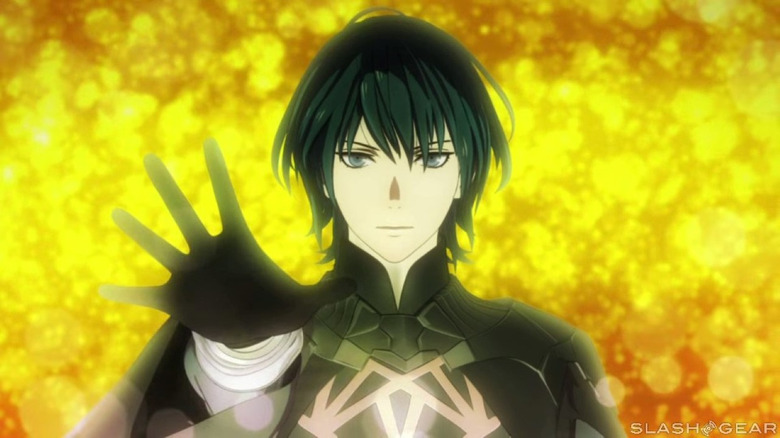
I don't even think it matters if you're brand new to tactical RPGs or if you were playing Fire Emblem imports from Japan three decades ago. I think Fire Emblem: Three Houses is accessible to series newcomers while offering something for veterans to sink their teeth into as well. It's rare that I'm driven to play a game more than once, but that's definitely the plan with Fire Emblem: Three Houses. I view this first playthrough as just the beginning of my experience with this game, and I'm really looking forward to spending a lot more time with it.
